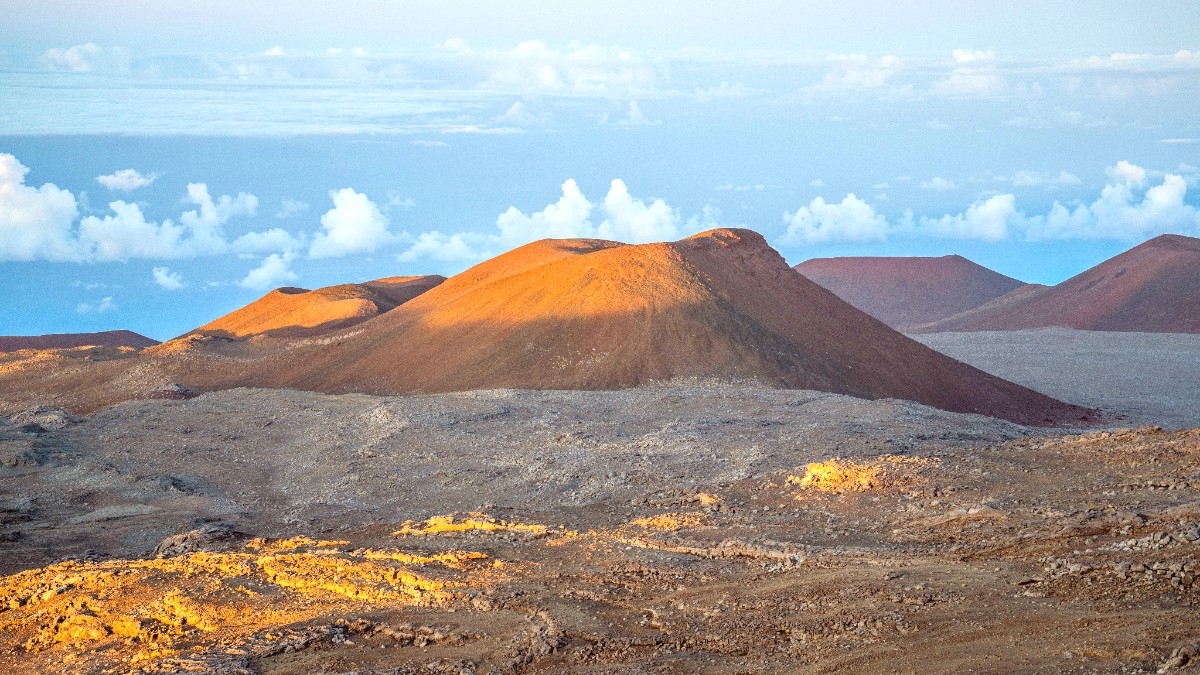
Hawaii, USA
The Big Island certainly delivers on that promise with its diverse ecosystems, from active volcanoes to black sand beaches. Mauna Kea presents a dramatic departure from this tropical stereotype. It makes possible an extreme alpine environment within reach of palm trees, where snow can fall even as beachgoers enjoy the surf below. This unique duality makes Mauna Kea a destination that challenges expectations and rewards adventurous spirits.
Mauna Kea visits are not merely sightseeing; they are adventures touching profound themes of nature, science, and cultural heritage.
You stand where earth's creation meets the universe's quiet majesty. The transition from sea level to over 13,000 feet in a few hours is a physical and sensory journey, leading to the summit's awe-inspiring spectacle. Whether interest lies in astronomy, geology, or simply seeking an extraordinary natural experience, Mauna Kea is a perspective rare elsewhere on Earth. Witness sunsets stretching for miles, creating a breathtaking canvas of color, then see the night sky ignite with millions of stars, visible with stunning clarity. This journey to Mauna Kea brings lifetime memories, reshaping your understanding of Hawaii and its place in the world.
Mauna Kea, a dormant volcano, dominates the northern landscape of Hawaiʻi Island. Its peak rises to 4,207 meters (13,803 feet) above sea level, making it the highest point in the Hawaiian Islands and the second-highest island peak worldwide. When measured from its true base on the ocean floor, Mauna Kea extends more than 10,210 meters (33,500 feet) from bottom to top, making it taller than Mount Everest. This immense scale highlights the powerful geological forces behind the Hawaiian archipelago.
The volcano formed approximately 1 million years ago, with its most recent eruption around 4,600 years ago, classifying it as dormant. Its slopes exhibit a dramatic transition in ecosystems, reflecting the extreme elevation changes and varying rainfall patterns. At lower elevations, tropical rainforests thrive. As you ascend, the landscape gradually shifts, becoming drier and more arid, transitioning through diverse ecological zones. Near the summit, the environment transforms into an alpine desert, characterized by sparse vegetation.
Summit sits above clouds, trapping moisture below.
From atmospheric conditions, excellent for observation.
Over 300 nights a year offer unobstructed views.
Small towns on the Big Island contribute to darkness.
Unparalleled clarity draws astronomers worldwide.
The summit area of Mauna Kea sits above the inversion layer, a meteorological phenomenon where temperature increases with altitude, trapping clouds and moisture below. This unique atmospheric condition makes for extremely dry air and exceptionally clear skies for over 300 nights a year, making it an ideal location for astronomical observation.
The summit's high altitude and position above the inversion layer create ideal conditions for astronomy, with dry air and over 300 clear nights annually.
Mauna Kea draws astronomers globally seeking the clearest views of distant galaxies, a testament to its exceptional atmospheric qualities.
The journey to the summit provides a vivid display of Hawaii's diverse natural environments, transitioning from tropical to alpine landscapes.
Mauna Kea holds profound cultural and historical significance for Native Hawaiians, who regard it as a sacred mountain, known as Wao Akua, "the realm of the gods." For generations, the mountain has served as a powerful symbol of creation, a spiritual link to ancestors, and a place where the heavens meet the earth. Ancient Hawaiians considered the summit the piko, or umbilical cord, of the island, a place connecting the spiritual and physical worlds. Access to the summit was traditionally restricted to aliʻi (royalty) and high-ranking priests, who ascended for solemn religious ceremonies, important burials, and sophisticated astronomical observations.
Beyond its spiritual importance, Mauna Kea was a practical resource. Ancient Hawaiians extensively used the mountain for quarrying basalt rock. The ʻAdz Quarry (Kaluakapoʻi), located on the mountain’s southern slope, is the largest prehistoric quarry in the Pacific, yielding durable, fine-grained basalt used for crafting tools, weapons, and other implements.
Wao Akua, "realm of the gods," a spiritual link to ancestors.
Kilo hōkū tracked celestial movements for navigation and seasons.
Largest prehistoric quarry in the Pacific, source for tools.
The exceptional atmospheric conditions that drew ancient Hawaiian astronomers to Mauna Kea also garnered modern scientific interest. Starting in the 1960s, astronomers recognized the summit's unparalleled clarity and began constructing advanced observatories.
At 4,207m (13,803 ft), it is Hawaii's tallest mountain.
Over 300 nights a year are ideal for astronomy.
Home to 13 telescopes from 11 countries.
Prominent research facility, peering deep into the universe.
State-of-the-art facility, groundbreaking research.
Observatories conduct research and yield unique views of celestial phenomena.